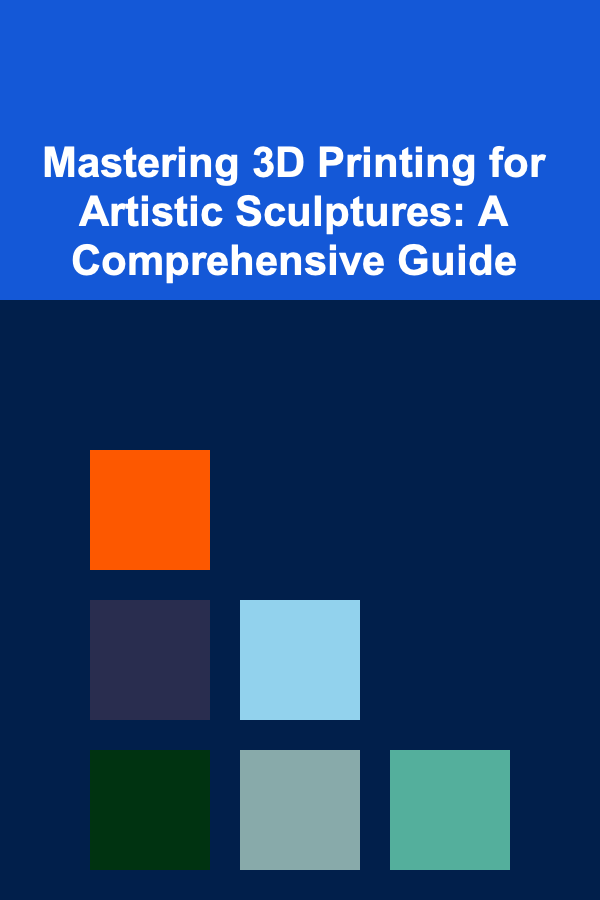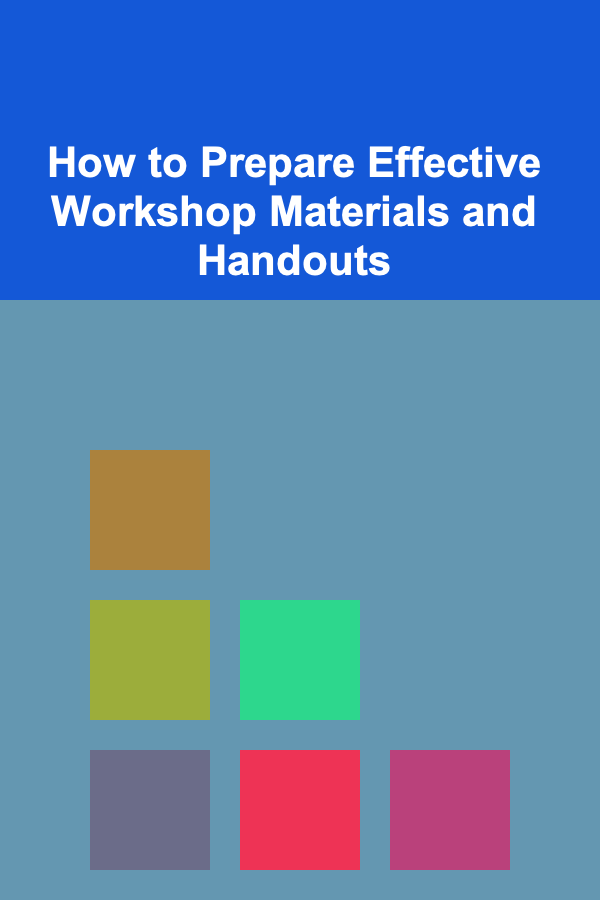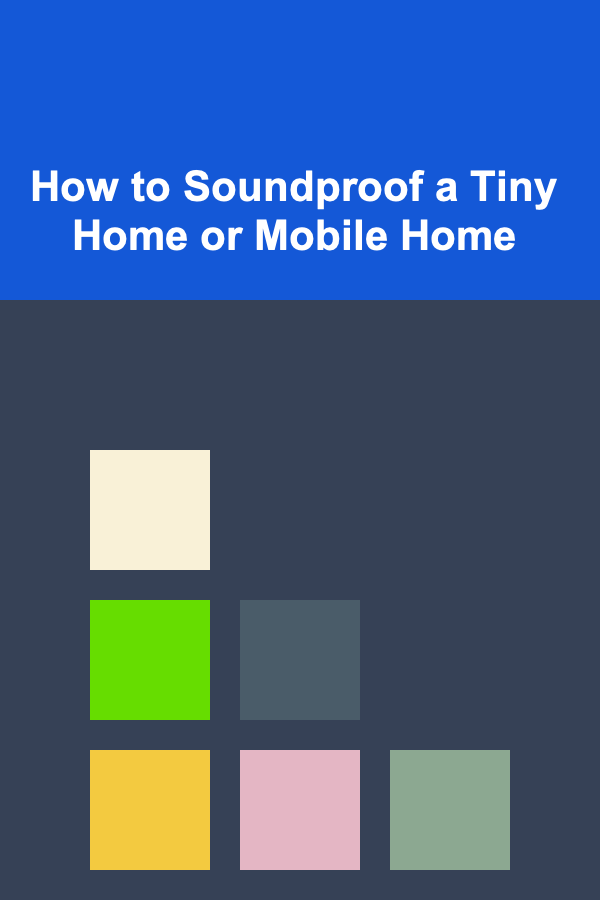
Mastering 3D Printing for Artistic Sculptures: A Comprehensive Guide
ebook include PDF & Audio bundle (Micro Guide)
$12.99$8.99
Limited Time Offer! Order within the next:

3D printing, also known as additive manufacturing, has revolutionized various industries, from engineering and medicine to architecture and, most significantly for our focus, art. No longer limited to subtractive methods like carving or molding, artists can now realize complex, intricate designs previously deemed impossible. This guide provides an in-depth exploration of mastering 3D printing for artistic sculptures, covering everything from initial concept to post-processing techniques.
I. Understanding the Landscape: 3D Printing Technologies for Art
Choosing the right 3D printing technology is paramount to achieving desired artistic results. Each method offers distinct advantages and disadvantages regarding material properties, resolution, cost, and finishing requirements. Here's a breakdown of the most relevant technologies for sculpting:
A. Fused Deposition Modeling (FDM)
FDM is perhaps the most widely accessible 3D printing technology. It works by extruding a thermoplastic filament through a heated nozzle, depositing it layer by layer onto a build platform. While relatively inexpensive, FDM prints often exhibit noticeable layer lines, which can detract from the aesthetic appeal of sculptures unless carefully addressed during post-processing.
Advantages: Affordability, wide range of available materials (PLA, ABS, PETG, Nylon, etc.), relatively simple to use.
Disadvantages: Lower resolution, visible layer lines, potential for warping, support structures often required.
Artistic Applications: Good for larger-scale sculptures where intricate detail is less critical, exploring textures through layer lines, prototyping designs before using more expensive technologies.
B. Stereolithography (SLA) and Digital Light Processing (DLP)
SLA and DLP are resin-based 3D printing technologies offering significantly higher resolution and smoother surface finishes than FDM. SLA uses a laser to cure liquid resin layer by layer, while DLP utilizes a projector to cure an entire layer at once. This allows for more intricate details and complex geometries.
Advantages: High resolution, smooth surface finish, intricate detail, suitable for smaller, detailed sculptures.
Disadvantages: Limited material options (mostly resin-based), resin can be brittle and require post-curing, smaller build volumes compared to FDM, often requires support structures.
Artistic Applications: Ideal for creating highly detailed sculptures, jewelry, miniatures, and intricate patterns.
C. Selective Laser Sintering (SLS)
SLS uses a laser to fuse powdered materials, such as nylon or flexible TPU, layer by layer. One of its key advantages is that it doesn't require support structures (the unsintered powder supports the part), opening up design possibilities with complex internal geometries and interlocking parts.
Advantages: No support structures required, strong and durable parts, good for functional sculptures, can print in flexible materials.
Disadvantages: Higher cost than FDM or SLA, limited material options compared to FDM, can have a slightly grainy surface finish, requires specialized equipment and expertise.
Artistic Applications: Creating functional sculptures with moving parts, exploring interlocking geometries, and producing strong, durable pieces.
D. Multi Jet Fusion (MJF)
MJF is another powder-based technology, similar to SLS, but instead of a laser, it uses inkjet arrays to apply fusing and detailing agents to the powder bed before being exposed to infrared energy. This allows for even greater control over material properties and surface finish compared to SLS.
Advantages: Excellent surface finish, high precision, good material properties (strong and durable), no support structures required.
Disadvantages: High cost, limited material options, requires specialized equipment and expertise.
Artistic Applications: Producing high-quality, durable sculptures with complex geometries and fine details, functional art pieces that require precision and strength.
E. Binder Jetting
Binder jetting involves using an inkjet print head to deposit a binding agent onto a bed of powder, bonding the particles together layer by layer. This process can be used with a wide range of materials, including metals, ceramics, and sand, leading to diverse artistic possibilities.
Advantages: Wide range of material options (metals, ceramics, sand), relatively large build volumes, can produce full-color prints (depending on the binder jetting system).
Disadvantages: Parts are often fragile in their green state and require infiltration or sintering for strength, post-processing can be extensive, dimensional accuracy may be lower than other technologies.
Artistic Applications: Creating metal sculptures, ceramic pieces, sand castings for art installations, and exploring full-color 3D printed art.
II. The Creative Process: From Concept to Digital Model
The journey from an artistic vision to a physical 3D printed sculpture begins with a well-defined concept and translates into a digital model using specialized software.
A. Conceptualization and Inspiration
Before touching any software, spend time exploring your artistic vision. Sketch ideas, gather references, and consider the following:
- Form and Shape: What are the key features of your sculpture? Are there flowing curves, sharp angles, or intricate details?
- Scale and Size: How large will the final sculpture be? Consider the limitations of your chosen 3D printing technology's build volume.
- Material and Texture: What material will best convey the desired aesthetic? Consider the surface finish and texture you want to achieve. Will you need to paint or otherwise finish the sculpture?
- Functionality: Is the sculpture purely aesthetic, or will it have a functional component (e.g., a lamp, a container)?
B. Choosing the Right 3D Modeling Software
Numerous 3D modeling software options cater to different skill levels and artistic styles. Here are some popular choices:
- Tinkercad: A free, browser-based software ideal for beginners. It uses a simple block-building approach, making it easy to create basic shapes and assemble them into more complex designs.
- Blender: A powerful, free, and open-source software used by professionals in various industries, including animation, game development, and 3D printing. It offers a comprehensive set of tools for sculpting, modeling, texturing, and rendering. However, it has a steeper learning curve than Tinkercad.
- Sculptris (ZBrushCoreMini): Free software from Pixologic that focuses on digital sculpting. It uses a "digital clay" approach allowing artists to push, pull, and smooth surfaces much like working with traditional clay. Easy to learn but powerful for creating organic shapes.
- ZBrush: The industry-standard software for digital sculpting. It offers unparalleled detail and control, allowing artists to create incredibly realistic and intricate models. It's the most expensive option but provides the most advanced sculpting tools.
- Fusion 360: A CAD (Computer-Aided Design) software that's useful for creating precise, mechanical designs. It can also be used for sculpting, but it's better suited for more geometric and architectural forms than organic shapes. Offers a free version for personal use.
- Rhino: Another powerful CAD software favored by architects and designers. Known for its NURBS (Non-Uniform Rational B-Splines) modeling capabilities, it allows for the creation of smooth, flowing surfaces.
C. Digital Sculpting Techniques
Digital sculpting is an art form in itself. Here are some essential techniques to master:
- Understanding Topology: Topology refers to the structure of your 3D model's mesh (the network of vertices, edges, and faces that make up the model). Good topology is crucial for smooth surfaces, clean deformations, and efficient 3D printing. Avoid excessive triangles and strive for even quad distribution.
- Brush Techniques: Familiarize yourself with the different brushes available in your chosen sculpting software. Learn how to use brushes for adding volume, smoothing surfaces, creasing details, and creating textures. Experiment with different brush settings to achieve desired effects.
- Dynamic Topology (Dyntopo): Dyntopo, found in programs like Blender, dynamically adds or removes polygons as you sculpt, allowing you to focus on form without worrying about underlying topology constraints. This is great for quickly prototyping and experimenting.
- Subdivision Modeling: Subdivision modeling involves starting with a low-resolution mesh and gradually increasing its density through subdivision. This allows you to maintain a clean topology and add detail progressively.
- Using Reference Images: When sculpting a realistic or representational sculpture, use reference images to guide your work. This will help you accurately capture proportions, anatomy, and details.
D. Optimizing Your Model for 3D Printing
Once you're satisfied with your sculpted model, it's crucial to optimize it for 3D printing. This involves ensuring that the model is watertight (no holes or gaps), has sufficient wall thickness, and is properly oriented for printing.
- Watertightness: Your 3D model must be a closed volume, meaning there are no holes or gaps in the surface. Most 3D modeling software has tools to check for and fix non-manifold geometry (errors in the mesh that prevent it from being a closed volume).
- Wall Thickness: The walls of your sculpture need to be thick enough to be structurally sound when 3D printed. The minimum wall thickness will depend on the chosen material and printing technology. Consult your printer's specifications or experiment to find the optimal thickness.
- Orientation: The orientation of your model on the print bed can significantly impact print quality and support structure requirements. Consider which surfaces are most important and orient the model to minimize the need for support structures on those surfaces. Generally, orienting the model to minimize overhangs is a good strategy.
- Hollowing (Optional): For larger sculptures, consider hollowing out the model to reduce material consumption and printing time. Leave small drain holes to allow excess resin or powder to escape after printing. Be sure to calculate the wall thickness needed after hollowing.
- Resolution: While high resolution is desirable for detail, overly high resolution can create unnecessarily large file sizes and increase printing time. Optimize the model's resolution to balance detail with printability.
E. File Format and Export
The most common file format for 3D printing is STL (Stereolithography). Other formats, such as OBJ and 3MF, are also becoming increasingly popular. When exporting your model, ensure that it is exported at the desired resolution and that the units are correct (e.g., millimeters or inches).
Use a software like MeshLab to clean up your STL files and reduce polygon count if necessary.
III. The Printing Process: Slicing, Support Structures, and Material Selection
With a finalized digital model, the next step is preparing it for 3D printing. This involves slicing the model, generating support structures (if needed), and selecting the appropriate material.
A. Slicing Software
Slicing software converts your 3D model into a series of instructions that the 3D printer can understand. It essentially "slices" the model into horizontal layers and generates a toolpath for the printer's nozzle or laser to follow.
Popular slicing software options include:
- Cura: A free and open-source slicer that's widely used for FDM printing. It offers a user-friendly interface and a wide range of settings for controlling print parameters.
- PrusaSlicer: Another popular free slicer, developed by Prusa Research. It's known for its advanced features and accurate print predictions.
- Simplify3D: A commercial slicer that offers advanced features and customization options. It's particularly useful for complex prints and multi-material printing.
- Chitubox: A popular slicer for resin-based 3D printers (SLA/DLP). It offers excellent support generation tools and features specifically designed for resin printing.
B. Understanding Slicing Parameters
Slicing software offers a multitude of parameters that can affect the quality and success of your prints. Here are some of the most important:
- Layer Height: The thickness of each layer. Lower layer heights result in smoother surfaces but increase printing time. Higher layer heights result in faster printing but can lead to more visible layer lines.
- Infill Density: The amount of material used to fill the interior of the model. Higher infill densities result in stronger prints but increase material consumption and printing time. For sculptures, a lower infill density is often sufficient.
- Print Speed: The speed at which the printer moves its nozzle or laser. Lower print speeds generally result in higher quality prints but increase printing time.
- Temperature: The temperature of the nozzle or laser. The optimal temperature will depend on the chosen material.
- Support Structures: Supports are necessary for overhangs and other features that cannot be printed directly on the build platform. The type and placement of supports can significantly affect print quality and post-processing requirements.
- Adhesion: Techniques to improve the first layer adhesion to the build plate. (e.g. Brim, Raft)
C. Generating and Optimizing Support Structures
Support structures are essential for printing complex geometries with overhangs or unsupported features. Slicing software can automatically generate supports, but it's often necessary to manually adjust their placement and settings to optimize print quality and minimize material consumption.
- Support Type: Different slicing software offers various support types, such as tree supports, linear supports, and grid supports. Choose the support type that is most appropriate for your model and printing technology. Tree supports are often preferred for their ease of removal and minimal impact on surface finish.
- Support Density: The density of the support structures. Higher support densities provide more stability but can be more difficult to remove.
- Support Overhang Angle: The angle at which support structures are generated. Adjust this angle to minimize the need for supports in areas where they are not strictly necessary.
- Manual Placement: Manually placing support structures allows for precise control over their location and density. This is particularly useful for complex geometries where automatic support generation may not be optimal.
D. Material Selection for Artistic Expression
The choice of material is a critical aspect of 3D printing for artistic sculptures. Each material offers unique properties and aesthetic qualities that can significantly impact the final result.
- PLA (Polylactic Acid): A biodegradable thermoplastic derived from renewable resources. It's easy to print, relatively inexpensive, and available in a wide range of colors. However, it's not very strong or heat-resistant. Excellent for prototyping and low-stress artistic objects.
- ABS (Acrylonitrile Butadiene Styrene): A stronger and more durable thermoplastic than PLA. It's more heat-resistant and can withstand higher stresses. However, it's more difficult to print (requires a heated bed and enclosure) and emits fumes during printing. Offers a smooth surface finish when properly printed.
- PETG (Polyethylene Terephthalate Glycol): A versatile thermoplastic that combines the ease of printing of PLA with the strength and durability of ABS. It's also food-safe, making it suitable for functional art pieces. Good chemical resistance.
- Nylon: A strong and flexible thermoplastic that's resistant to abrasion and chemicals. It's hygroscopic (absorbs moisture from the air), so it needs to be stored in a dry environment and dried before printing.
- Resins (SLA/DLP): Resin-based materials offer high resolution and smooth surface finishes. Various types of resins are available, including standard resins, flexible resins, tough resins, and castable resins (for jewelry making).
- Metal Filaments: Filaments infused with metal powders (e.g., bronze, copper, steel) can be printed on standard FDM printers. The printed parts can then be sintered (heated to high temperatures) to remove the binder and create a solid metal object. Requires post-processing.
- Ceramic Filaments: Similar to metal filaments, ceramic filaments allow for the creation of ceramic objects using FDM printing. These objects also require sintering after printing.
IV. Post-Processing: Refining and Enhancing Your Sculptures
Post-processing is a crucial step in transforming a raw 3D printed object into a polished and refined sculpture. It involves removing support structures, smoothing surfaces, and adding finishing touches to achieve the desired aesthetic.
A. Support Removal
Removing support structures carefully is essential to avoid damaging the sculpture. Use appropriate tools, such as pliers, cutters, and sandpaper, to remove supports without leaving behind unsightly marks.
- Flush Cutters: Ideal for cutting away the bulk of the support structures.
- Needle-Nose Pliers: Useful for gripping and removing small support fragments.
- Sandpaper: Used to smooth down any remaining support marks or rough edges. Start with coarse grit sandpaper and gradually move to finer grits.
- Heat Gun (for FDM prints): Applying heat can soften the support material, making it easier to remove.
- Solvent (for resin prints): Isopropyl alcohol (IPA) is typically used to wash resin prints and remove uncured resin. Soaking the print in IPA can also soften the support structures, making them easier to remove.
B. Surface Smoothing
3D printed objects, particularly those printed with FDM technology, often exhibit noticeable layer lines. Several techniques can be used to smooth these surfaces.
- Sanding: Sanding is the most common method for smoothing 3D printed surfaces. Start with coarse grit sandpaper to remove major imperfections and gradually move to finer grits to achieve a smooth finish. Wet sanding can help to reduce dust and improve the surface finish.
- Chemical Smoothing (for ABS): Acetone vapor smoothing can be used to smooth ABS prints. The object is exposed to acetone vapor, which melts the surface and creates a smooth, glossy finish. This method requires proper safety precautions and ventilation.
- Epoxy Coating: Applying a thin layer of epoxy resin can fill in layer lines and create a smooth, durable surface. Epoxy is available in various finishes, including clear, colored, and metallic.
- Filler Primer: Applying a filler primer can fill in small imperfections and create a smooth surface for painting. Several coats may be needed, with sanding in between each coat.
- Vibratory Tumbler: A vibratory tumbler uses abrasive media to smooth and polish 3D printed parts. This method is particularly useful for smoothing complex geometries and parts with intricate details.
C. Painting and Finishing
Painting and finishing can add color, texture, and detail to your 3D printed sculptures.
- Priming: Apply a primer to the sculpture to create a smooth, even surface for painting.
- Painting: Use acrylic paints, spray paints, or airbrush paints to add color to the sculpture. Experiment with different painting techniques, such as dry brushing, layering, and washes, to create unique effects.
- Sealing: Apply a sealant to protect the paint and create a durable finish. Sealants are available in various finishes, including matte, gloss, and satin.
- Adding Details: Use paint markers, stencils, or other tools to add fine details to the sculpture.
- Weathering: Apply weathering techniques to create a realistic or aged appearance. This can involve using washes, dry brushing, and other techniques to simulate dirt, rust, and wear.
D. Additional Techniques
- Cold Casting: Mixing metal powder with resin and applying it to the surface of a print to create a metallic look.
- Electroplating: Coating the 3D printed object with a thin layer of metal through electrodeposition.
- Hydro Dipping: Transferring a printed pattern onto the surface of the sculpture by immersing it in water.
V. Conclusion: Unleashing Your Artistic Potential with 3D Printing
3D printing has democratized the creation of sculptures, opening up new avenues for artistic expression. By understanding the various technologies, mastering digital sculpting techniques, and refining your post-processing skills, you can unlock your creative potential and bring your artistic visions to life. Experiment with different materials, techniques, and styles to develop your own unique artistic voice and push the boundaries of what's possible with 3D printing.
Remember that mastering 3D printing for art is a continuous learning process. Stay updated with the latest advancements in technology and materials, and never be afraid to experiment and push your creative boundaries. The possibilities are truly limitless!

How to Prepare Effective Workshop Materials and Handouts
Read More
How to Soundproof a Tiny Home or Mobile Home
Read More
How to Use Color-Coding to Organize Bookshelves
Read More
Mastering Healthy Lunch Ideas for Weight Loss
Read More
How to Design a Biotope Aquarium for Native Fish
Read More
10 Tips for Tackling Seasonal Family To-Do Lists (Spring Cleaning, Holiday Prep)
Read MoreOther Products

How to Prepare Effective Workshop Materials and Handouts
Read More
How to Soundproof a Tiny Home or Mobile Home
Read More
How to Use Color-Coding to Organize Bookshelves
Read More
Mastering Healthy Lunch Ideas for Weight Loss
Read More
How to Design a Biotope Aquarium for Native Fish
Read More